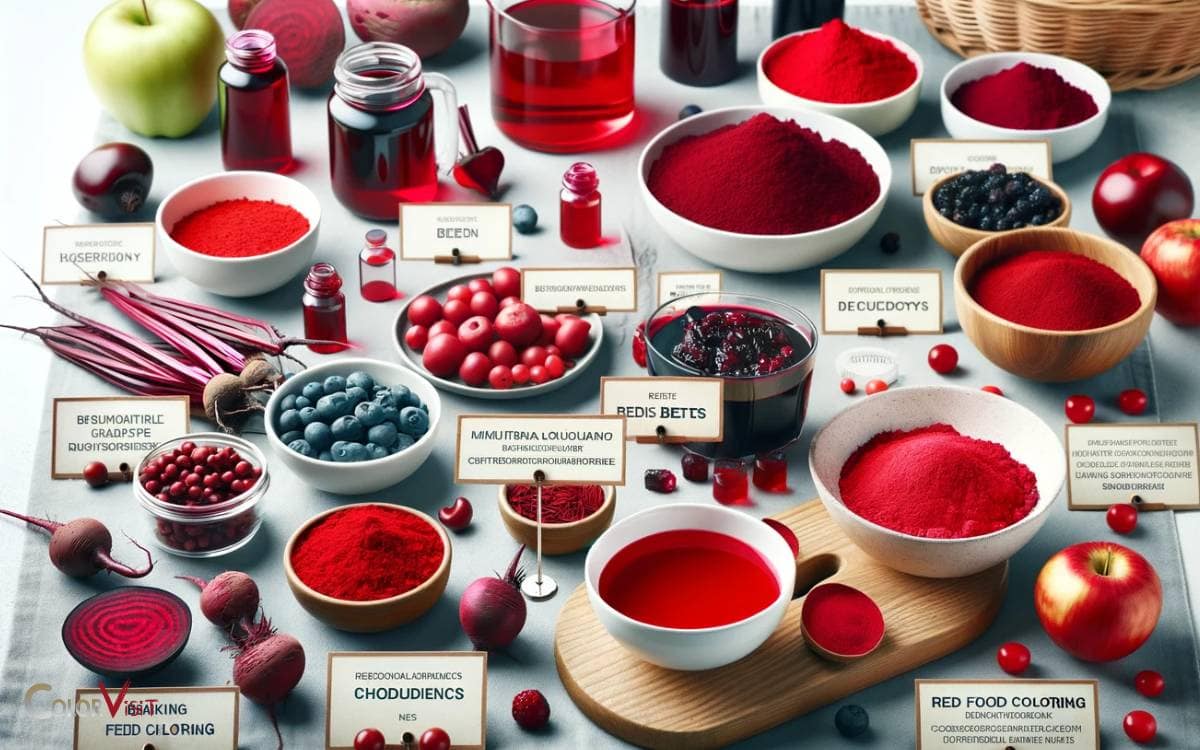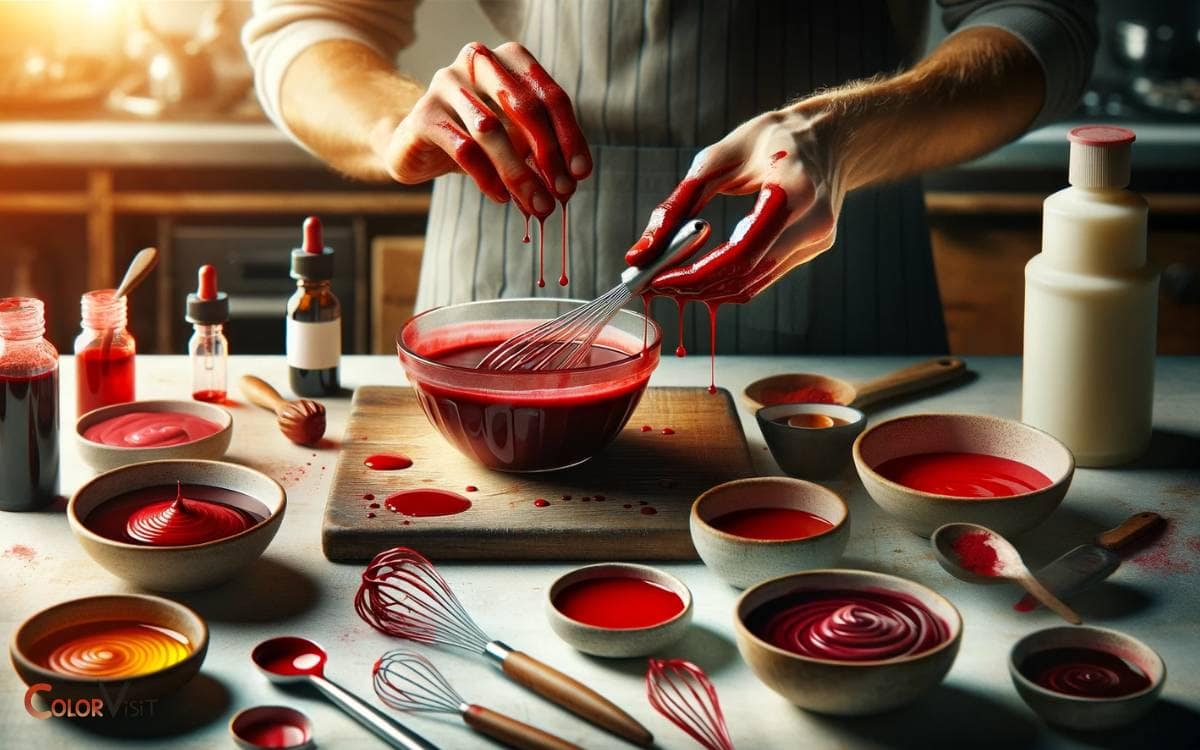How to Make Red Color With Food Coloring? Simple Guide!
To make the color red with food coloring, you typically start with a base of primary red dye and adjust the shade by adding small amounts of other colors if needed.
Here’s how you can achieve different shades:
With the right type of food coloring and a careful hand, you can produce a stunning, vivid red that will bring your dishes to life.
Key Takeaway
Understanding the Basics of Red Food Coloring
Red food coloring is a widely used additive in the food industry to impart a vibrant and consistent red color to various food products.
- The most common type of red food coloring is made from compounds such as carminic acid, lycopene, or erythrosine.
- Carminic acid, derived from the cochineal insect, is a popular natural red food coloring agent.
- Lycopene, found in tomatoes, strawberries, and watermelon, is also used to create red food coloring.
- Erythrosine is a synthetic red dye that is commonly used in food products.
- These compounds are carefully extracted, processed, and purified to ensure a high-quality, potent red food coloring.
Understanding the basics of these compounds and their interactions with different food matrices is essential for creating innovative and appealing red-colored food products.
Primary Red Food Coloring Ingredients
The primary ingredients used for making red food coloring include carminic acid, lycopene, and erythrosine. These ingredients are responsible for imparting the vivid red hue to various food products.
Here’s a closer look at each of these primary red food coloring ingredients:
- Carminic Acid: Derived from the cochineal insect, carminic acid is a natural red pigment often used in food coloring.
- Lycopene: This naturally occurring pigment is found in red fruits and vegetables such as tomatoes, watermelon, and red peppers. It is utilized as a natural food coloring agent.
- Erythrosine: Also known as Red No. 3, erythrosine is a synthetic red dye commonly used in food coloring applications.
- Other Natural Extracts: In addition to the primary ingredients above, red food coloring can also be derived from natural sources like beetroot and pomegranate.
These ingredients are crucial in creating vibrant red food coloring for a variety of culinary and commercial applications.
Mixing Techniques for Achieving Red Shades
To achieve a variety of red shades, mixing techniques involve combining the primary red food coloring ingredients with precision and attention to detail.
- By blending different ratios of red food coloring with other colors, such as yellow or blue, a spectrum of red shades can be achieved.
- For example, adding a small amount of yellow to red food coloring can produce a warmer, orange-toned red, while incorporating a touch of blue can create a cooler, deeper red hue.
- Additionally, layering the red food coloring in gradual increments allows for the creation of nuanced shades, from light pink to rich crimson.
Experimenting with varying proportions and layering techniques is essential for achieving the desired red shade, offering a wide range of options for innovative and precise color mixing.
Tips for Adjusting Red Color Intensity
When adjusting the intensity of red color using food coloring, it is important to carefully control the amount of color added to achieve the desired shade.
Here are some tips for achieving the perfect red hue:
- Gradual Addition: Add a small amount of red food coloring at a time to avoid over-saturating the mixture and to allow for precise color adjustments.
- Mix Well: Thoroughly mix the food coloring into the mixture to ensure an even distribution of color, which can impact the final shade of red.
- Test Samples: Prepare small samples of the mixture at different stages of color adjustment to visually compare the shades and make incremental changes if necessary.
- Lighting Conditions: Evaluate the red color intensity under different lighting conditions as it can affect the perception of the hue.
Application and Usage Considerations
Consider the specific application requirements and usage scenarios when utilizing red food coloring to ensure the desired outcome is achieved.
- For baked goods, such as cakes and cookies, it is essential to account for the baking temperature and duration, as these factors can affect the final shade of red.
- When coloring beverages or liquids, it is advisable to start with a small amount of food coloring and gradually increase until the desired hue is reached, as overdosing can lead to an artificial taste.
- In savory dishes, especially those with high acidity levels, such as tomato-based sauces, consider using gel food coloring as it withstands heat and acidity better than liquid food coloring.
Additionally, when incorporating red food coloring into frostings or icings, take into account the moisture content and adjust accordingly to maintain the desired consistency.
Conclusion
Understanding the basics of red food coloring is essential for achieving the desired red shade.
This includes knowing its primary ingredients, mixing techniques, and tips for adjusting color intensity. Some may argue that achieving a true red color with food coloring can be challenging.
However, with the right knowledge and techniques, it is possible to create vibrant and intense red hues for various culinary applications.






